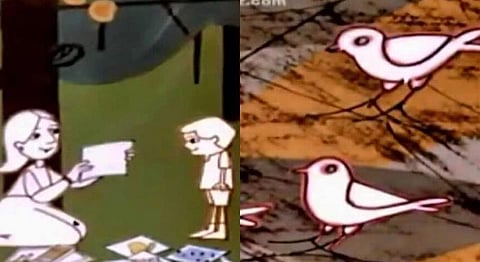
- HOMEGROWN WORLD
- #HGCREATORS
- #HGEXPLORE
- #HGVOICES
- #HGSHOP
- CAREERS
- ABOUT US
- CONTACT US

Ek Chidiya, Anek Chidiya is the title song of Ek, Anek Aur Ekta, (One, Many and Unity) one of the earliest animation films made in India. Produced by the National Council of Educational Research and Training (NCERT), it was released in 1974 as an educational initiative to impart the value of ‘Unity in Diversity’ at a time when the country was dealing with the ravages of the Indo-Pakistan war of 1971 which saw extreme political unrest and turmoil.
The film begins with a young boy trying to pluck mangoes, while his sister sings about hope. The narrative then goes on to show the sister explaining to her brother the concept of unity, whilst narrating a short story about a group of sparrows who united in order to escape from a bird catcher, with a sweet, chirpy song playing in the background all along. the sparrows are later shown to be forming an alliance with a group of mice to free themselves from the hunter’s net. In depicting a sense of solidarity through a fable, the film has tried to capture the idea of cultural differences in a positive light.
The film was aired on the public service broadcaster channel, Doordarshan and became a favourite among children and adults alike. Albeit an educational film of unity in diversity, the melody and simple yet endearing visuals captivated its audiences across the country.
The film was made by veteran Vijaya Mulay, whose great body of work has shaped how India is viewed by Indian and non-Indian filmmakers. In 1954, the Government of India appointed her as the Education Officer. Mulay also established the Delhi Film Society. In 1959, she also established the Federation of Film Societies of India with her close friend, Satyajit Ray as the founding president and Vijaya Mulay and critic Chidanand Das Gupta as joint secretaries. After the passing away of Satyajit Ray, Mulay was appointed as the President of FFSI.
Ek Anek Aur Ekta went on to win the National Film Award for Best Educational Film and it was the first film from the animation studios of the then Center for Education Technology (now, under NCERT). The film also won the Best Children’s Film award in Japan.
If you enjoyed reading this article, we suggest you also read:
